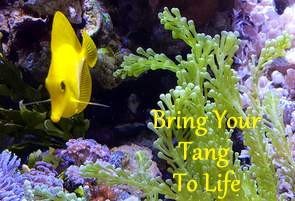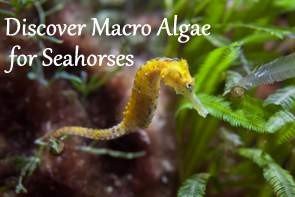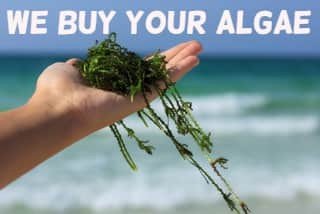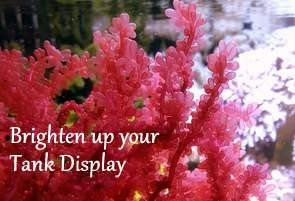How to get rid of nuisance algae?
Opposite to the beauty of wanted macroalgae in the marine tank, unwanted microalgae - so-called nuisance algae- can become a real nightmare for aquarists.
To identify them is a task which is with some research normally done quite quickly, but to get rid of them can take weeks if not months.
From our experience, we want to give you one possible guideline to get rid of these unwanted pest algae in your marine aquarium, to bring back
the enjoyment of this fantastic hobby.
We know that there are very different approaches, so feel free to add your comments and ideas below. This guide will concentrate on the general approach to this problem and is therefore much shorter and more focused written.
Please have a look at our Introduction and future articles when you like to dig deeper into this topic.
Nuisance Algae - Why do they grow in your tank?
The basis for the growth of algae in your tank is the existence of Phosphate and Nitrate in the water ( we neglect other chemicals algae might need as trace parts, to keep it simple here), plus sufficient lighting.
Phosphate!
The main reason how phosphate gets into the marine tank is with the food, especially by frozen food and some phosphate-rich flake food products.
Nitrate!
In short words... comes mainly from the excretions of your livestock and decomposing material.
The usage of dry or older live rock can cause your tank to cycle again, and will normally cause an algae bloom, which normally takes a few weeks.
Even larger movements of existing live rock in your tank can cause a new algae bloom.
How to get rid of nuisance micro algae?
- We recommend rinsing frozen food in a sieve with marine water, to wash out as much of the phosphate as possible, before giving it to your fishes.
- Check the food flakes you are feeding regarding the phosphate percentage, and choose a product your fish still like with a lower phosphate percentage. We find the flakes from Ocean Nutrition quite good.
- Don't overfeed!
- Do regular water changes with a quality salt mix, with zero TDS RO/DI water.
Whilst the Nitrate and Phosphate levels are high do even much more often water changes. - Use an appropriate skimmer for your tank volume and increase the output, which means wetter skimming. Don't wait for a week or even longer to get it full. As more as it gets already out of the water, as less it can build up!
- Think about the usage of PO4/NO3 binding media. But don't overdose. Don't rush this part, as it can cause dangerous problems to your livestock if done too fast.
- Check the water flow in your tank, and try to avoid areas of your live rock, without a good flow (so-called dead zones), as this can cause the buildup of detritus.
If this is not possible give those areas a good blast with a turkey baster or a low volume powerhead regularly.
If not already using a filter sock, think about using one in the future. - Depending on your livestock, reduce or turn off the light for a few days. This is not a problem for fishes, but some corals and macroalgae might suffer.
- If possible reduce or turn off for some further days the white, green and red colours of your led lamp.
- Check that the tank is not getting direct sunlight.
- Manually remove as much of the nuisance algae as possible, for example with a brush etc.
- Turn the rock with the unwanted algae upside down, so it doesn't get any light at all. Or place another rock on it, to keep any light away from it.
- Check your cleanup crew. We have a variety of different hermit crabs and snails in our tanks, as they prefer to eat different microalgae species.













 Current Delivery Delays Due To Storm Darcy
Current Delivery Delays Due To Storm Darcy  Christmas break for our macroalgae species.
Christmas break for our macroalgae species.  Red macroalgae species for the Reef Display Tank
Red macroalgae species for the Reef Display Tank